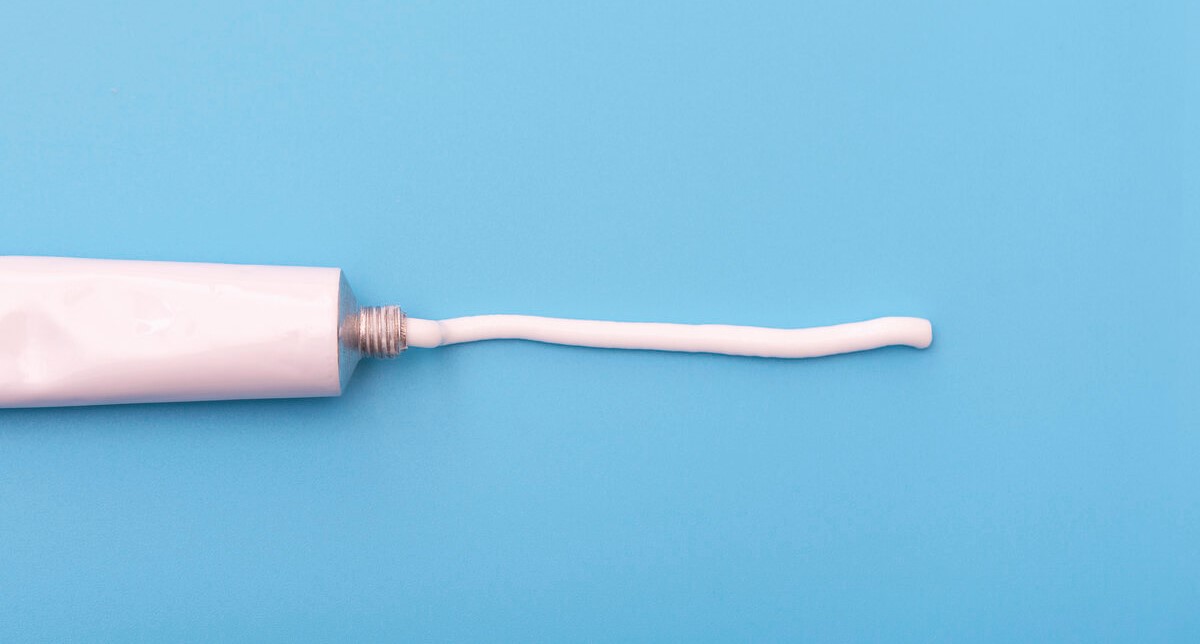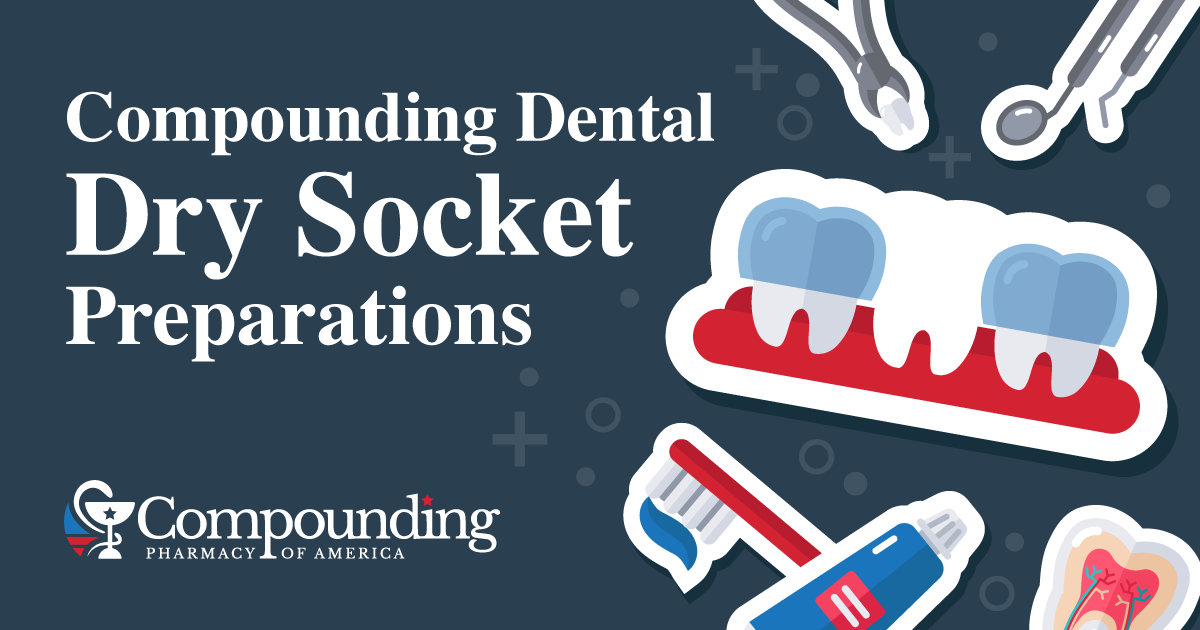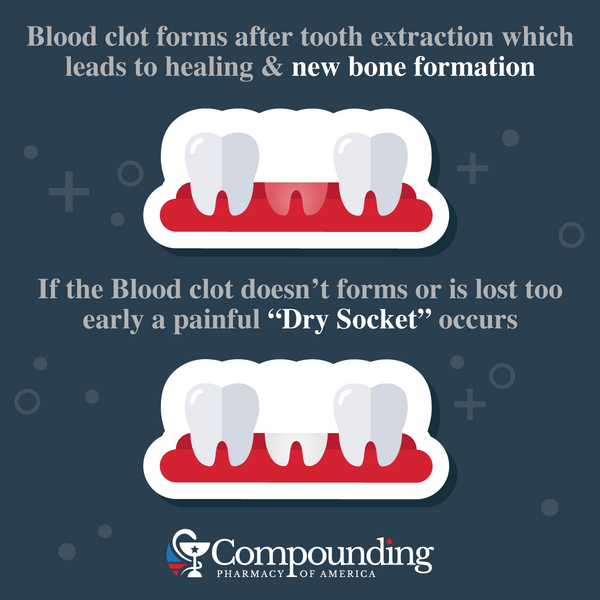Originally Posted On: Dental Dry Socket Compounding Paste for Pain Relief (compoundingrxusa.com)
Getting an adult tooth removed is a long and arduous process in itself. Besides the initial discomfort in the actual procedure, the wound itself is painful and prone to potential issues. One of such issues is dry socket. Dry socket is an uncommon occurrence that happens after an adult tooth extraction. Roughly 2-5% of people who have a tooth extracted get dry socket.
What Is Dry Socket
Dry socket is caused when the blood clot that protects the nerves and bone underneath is dislodged or dissolved leaving them exposed to air, food, and fluid. Infection and severe pain accompany the exposed nerves which can last 5 to 6 days while the wound heals. Fortunately, dry socket relief is readily available through dental compounds.
Symptoms of Dry Socket
- Severe pain a few days after extraction
- Radiating pain from extraction to other parts of the body on the same side as the extracted tooth
- Loss or partial loss of the blood clot in socket, and bone may be visible
- Bad breath or unpleasant taste
Preventing Dry Socket
 Photo from Getty Images
Photo from Getty Images
Leading into surgery, you can prevent dry socket in a number of ways. The best plan is to limit the number of complication factors before surgery. Complications can occur depending on the person. If you do not follow the guidelines listed by your dentist for proper at-home care, such as flushing the extraction site with salt water, you are at an increased risk for dry socket.
Those who frequently use the following or have previous oral conditions may be at an increased risk for dry socket:
- Smokers may experience slow healing or contamination of the site caused by the chemicals in cigarettes.
- Oral birth controls may cause complications in the healing process due to high estrogen levels increasing the chance of dry socket.
- Previous cases of dry socket can increase your chance of getting it again.
- Infection of the tooth or gums increases your risk of getting dry socket.
If left untreated, dry socket can turn into a serious infection. Osteomyelitis (an infection of the bone) can occur if complications arise. Treatment for osteomyelitis usually includes surgical removal of the infected bone and IV antibiotics for up to six weeks. Although osteomyelitis is rare among those who get dry socket, untreated osteomyelitis can spread rapidly turning into a chronic condition that results in the death of bone tissue.
To prevent severe pain and potentially chronic illness, you should make sure to avoid doing anything that could inflame or irritate the extraction site. Your orthopedic surgeon should give you a guide on how to prevent such complications.
Here are a few tips that your orthopedic surgeon may give you to prevent issues during the healing process after extraction:
- Eat soft foods for a few days after your surgery. Depending on the severity, you may need to eat soft foods up to a month after your surgery.
- Warm water that is not too cold or too hot is ideal during this time. The nerves in your mouth will be extra sensitive making it potentially painful to consume liquids with extreme temperatures.
- Avoid drinking out of a straw. In the same way that sucking on a cigarette can dislodge the blood clot forming over the socket, drinking from a straw can easily dislodge the forming blood clot prematurely.
- Wash your mouth using warm salt water. Mix half a teaspoon of salt in eight ounces of warm water and use it to wash your mouth similar to how you would use mouthwash. You shouldn’t do this until 24 hours after your surgery. As your mouth starts to heal slowly, you can gently start this process.
- Cold packs placed on the outside of the mouth over the extraction site can reduce swelling and inflammation.
- Prepare for ample rest time. Surgery of any kind is a painful and stressful process. To aid in the healing process make sure to give your body plenty of rest time after surgery.
- If applicable, avoid tobacco and oral birth control pills both leading up to surgery and for a period of time afterwards. Both tobacco and high-estrogen containing pills can lead to complications in the healing process.
Treating Dry Socket
 Photo from Getty Images
Photo from Getty Images
Although dry socket can naturally heal on its own after a few days, the process can be extremely painful and is prone to infection if left exposed to bacteria. Treatment of dry socket is then implemented if infection or possible complications arise.
Treatment of dry socket is done by a dentist or orthopedic care specialist and is usually done in three steps:
- Cleaning the extraction site of any food particles and bacteria to prevent infection.
- Application of medical gauze and packing of the extraction site that will relieve some pain and last for a period of a few days before dissolving or being removed, based on their instruction.
- Pain medication such as NSAIDs and other over-the-counter products. Alternately, if the pain persists at an intolerable level, prescription painkillers may be prescribed.
Your orthopedic surgeon will also give you a small set of guidelines to follow over the next few weeks while the extraction site starts to heal. These guidelines usually include things such as, washing your mouth with salt water and a soft-food diet that slowly goes back to normal after a period of time during the healing process. A list of medications or prescription medications to be taken and an appointment a few months later to make sure the healing process is going smoothly. To prevent complications or severe pain after tooth extraction, make sure to follow your orthopedic surgeons’ guidelines as close as possible.
Dry Socket Pain Relief
Dry socket can be an annoying and painful experience after a tooth extraction. Thankfully, dry socket relief comes in a number of forms. Dry socket medicine is one of the first steps implemented. Treatment for the pain in the form of medication is usually over-the-counter pain relievers, non-steroidal anti-inflammatory drugs (NSAIDs) such as ibuprofen, and flushing of the area. If the pain is persistent after taking dry socket medication, a dentist may prescribe a stronger pain killing drug or apply anesthesia before moving on to other treatments.
One of the most effective treatments of dry socket is through dry socket paste and medical gauze. Dry socket paste is a replacement for the blood clot that is supposed to form after extraction. The paste is put in place of the blood clot where the tooth used to sit. Once placed at the extraction site, dry socket paste protects the exposed nerves from air, food, and fluid while gently numbing the area. This paste is usually implemented together with medical gauze to relieve the symptoms of dry socket.
Dry socket paste used after the extraction process contains chemicals that promote healing and reduce pain. However, the paste your orthopedic surgeon uses might not be effective at completely eliminating the pain a patient feels. As a result, dental compounds can be sought out as an alternative. Dental compounds, or prescription compounding, is the manufacturing of custom medications that fit the individual in need. Custom dry socket paste can be created with increased pain relief for patients who have a high tolerance for common anesthesia or have a relatively low pain tolerance.
Why Use A Dental Compounded Paste For Dry Socket
 Photo from Getty Images
Photo from Getty Images
Dental compound is a custom-made paste tailored to the individual. Some people may need an increased dose of pain relief in the extraction area if their dry socket symptoms are too severe to treat with the normally applied dry socket paste. That’s where our custom-made dental compound comes into play to help you relieve the pain of dry socket. Everyone has individual health needs and some are more prone to pain or infection than others. Those who are more prone to experiencing lasting pain during the healing process after tooth extraction can use our dental compounds to reduce pain and complications.
Here at Compounding Pharmacy of America we specialize in the manufacturing of custom forms of prescription medication for a variety of health and dental needs. This includes making various forms of prescription medication not available at normal pharmacies. Medications can be bought in liquid or gel forms, additive-free, custom doses, flavors or cheaper formulas comparative to brand names and over the counter medications.
Specifically for dry socket, we can create a dental compound paste that helps with pain relief. You can contact us for any custom prescription you need and we’ll work with you and your doctor to relieve your dental pain and other concerns.

